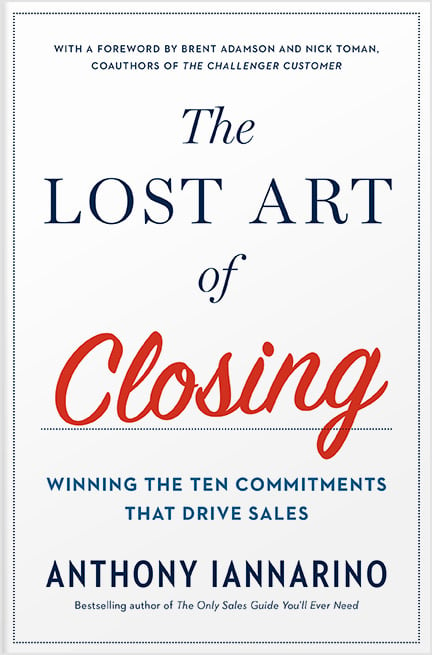The Gist:
- Buyers often make mistakes in their buying process, leading to poor decisions and even poorer results.
- Your role as a consultative salesperson is to provide clients advice on how to buy, not just what to buy.
- Recognizing and reversing buying mistakes can differentiate you in a crowded market and provide a better experience for your potential client.
I spent two days arguing with a friend on LinkedIn over the proposition that one should sell the way their buyer wants to buy. The idea was accompanied by statistics from the usual suspects: insight companies that are responsible for peddling a new fashion every year. In this case, we learned that Millennials, perhaps the most maligned and analyzed generation, would prefer not to interact with a salesperson at all. Another stat revealed that most buyers are 74% of the way through their buying process before they communicate with a salesperson.
I am unabashedly, unapologetically, and unrelentingly pro-salesperson. But being pro-salesperson also means recognizing our duties and responsibilities to our clients, mainly providing them the help they need even if it’s not the help they want. This means rejecting—with extreme prejudice—the idea of selling the way buyers want to buy, if it means being conflict-averse and compliant. Consider this (incomplete) list of problems salespeople experience when buyers try to buy the way they would prefer to buy.

- Spending too little time with salespeople and rushing discovery. Salespeople who mainly pitch their company or their solution deserve part of the blame, but most buyers set aside far too few hours to spend with salespeople, and mostly when they recognize they have a problem. Many spend an hour or so on discovery, not recognizing its value to them or their future results. More time with salespeople would help them make better choices about both the right solution and the right partner. The way you earn more of your client’s time is by making your conversations more valuable for your clients, which is why it’s important to get a deeper understanding of their business.
- Treating strategic decisions as if they are transactional in nature. Many buyers treat important decisions as if they were transactional, especially when buying something they have previously purchased. The mindset that one company is no different than the others in their category often reduces the time clients spend with salespeople, when they bother to engage with them at all. When an outcome is important enough to be strategic, you must persuade your clients to spend the time they need to better understand their decision and their choices.
- Rejecting insights that clash with their story and their anchors. One of the claims my friend made was that salespeople don’t bring enough insights to the table. While that’s true to a point, the bigger issue is that clients reject insights they don’t like. The human capacity for confirmation bias is immense, so the most valuable insights change the story by removing the client’s anchors (see Gary Klein’s work). For a host of reasons, including their stories, anchors, and incentives, buyers often struggle to recognize the reality of their situation until it harms their results. You should plant (and cultivate) the seeds of change early and often, making it easier to help clients experience the “aha” moment that allows them to change.

- Not treating the whole process of buying as choosing a future long-term partner. In some sales, the process of buying the product or solution is not nearly as important as determining to who is going to be the best long-term partner. Clients often meet too few people from the seller’s company and they bring too few of their own people into the process. When you have to work with someone on an important project, you want to make sure you are a good match. You help your client when you treat the conversation as if you are trying to establish a long-term relationship and influencing them to do the same.
No more pushy sales tactics. The Lost Art of Closing shows you how to proactively lead your customer and close your sales.
- Avoiding conversations that are necessary to making good decisions. The client who tells you they loved what you had to say and asks you to send pricing and a proposal immediately wants to shorten the time they need to spend on the decision they are making. The client who tells you that your solution is fine and that there is no reason to explore how it is going to work for them likewise wants a shortcut. The list of potential problems here is inexhaustible. Your role as a consultative salesperson is to insist on having the conversations necessary to produce the best results for your clients.
- Refusing to bring other stakeholders into the conversation, especially end users. There is a tendency to leave people out of conversations that directly impact them and their work, even though they have more skin in the game. Consensus doesn’t always include end-users and people who are not in positions of authority, resulting in solutions that aren’t as good as they could be and stakeholders who resent having a half-baked change thrust upon them. You provide tremendous value when you help your clients build the consensus they need by including the people your solution will serve.

- Not helping to build their solution. Some buyers tend to avoid the work of helping the salesperson and their organization customize and dial in the right solution, especially if they took a transactional approach to the purchase. Remember, this isn’t your solution: it’s your client’s solution, and they have to succeed with it. Your role is to help them design a solution that is going to work for their company and the people who need the solution.
- Replacing a discussion with an email attachment. The simple fact that a client asked you to send an email is no evidence that it is the right medium for the conversation. In fact, email can make any part of the sales conversation less effective, less clear, and easier to misconstrue. When a conversation is required, you have to sell the value of that conversation, helping the client buy the way they need to buy, even if it isn’t what they’d prefer.
- Not teaching the salesperson what they need to know about their business. Many buyers, my friend noted in his LinkedIn post, don’t believe that salespeople understand their business. It’s true that too many salespeople don’t recognize the fact that, as business advisors, they need to be businesspeople. But buyers share the blame when they don’t invest the time to teach their potential partners enough about their business and their company. You can improve your understanding by reading and preparing for meetings and asking your client to explain their business to you.
- Rushing through first meetings. This is a particularly vexing example of buyers buying badly. They start with an RFP, limit the selection to three companies, then only giving each salesperson a single hour to differentiate themselves from the other two companies—a process that does nothing to improve their decision. If you’re faced with a situation like this, your best option is to disrupt the process, by asking for all the things you know your prospective client needs to do to produce the best results.
No matter who is actually responsible for these errors, start believing that everything is your fault, empowering you to do something about it. Going along with buyers’ mistakes, simply so you can “sell the way buyers want to buy,” does them no favors. Instead, you should sell the way your buyer needs to buy: be a peer, be consultative, and tell the truth even when it’s uncomfortable, all in the name of better results.
Do Good Work:
- What mistakes do your clients routinely make and how do those mistakes harm them?
- How can you create enough value for your prospects that they avoid these common mistakes?
- Take full responsibility for helping your prospective clients do what they need to do, not what is expedient.









.jpg?width=768&height=994&name=salescall-planner-ebook-v3-1-cover%20(1).jpg)


